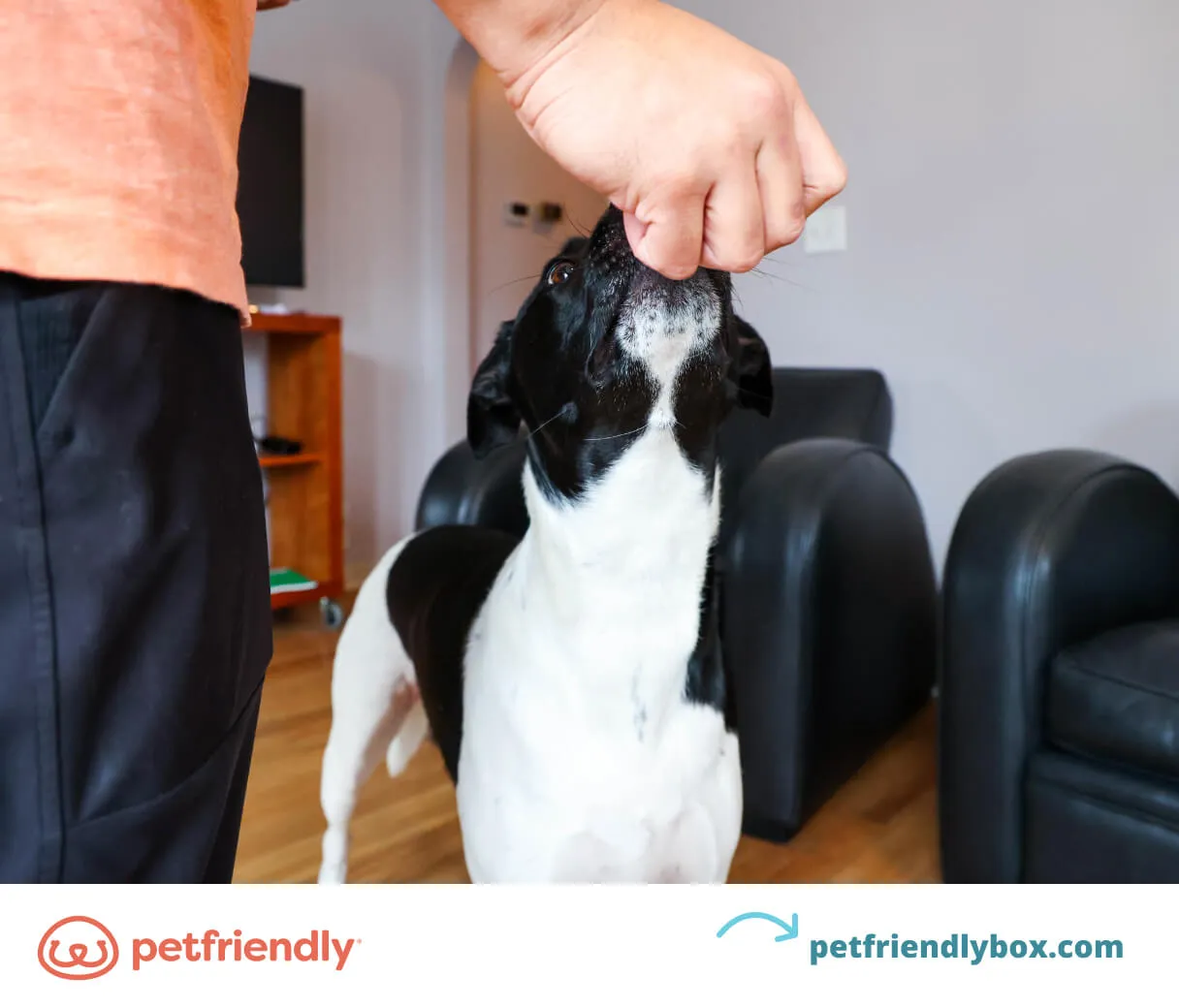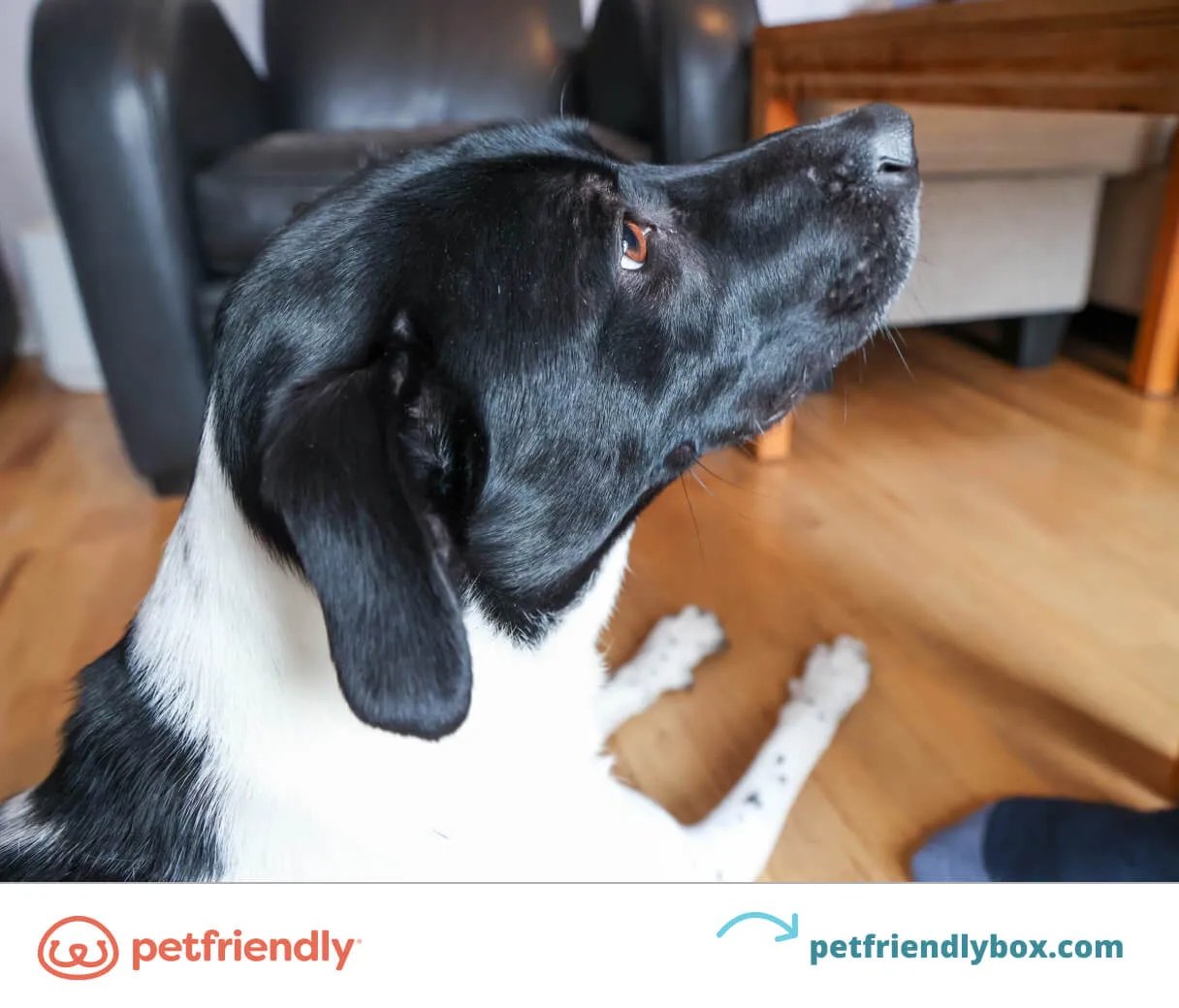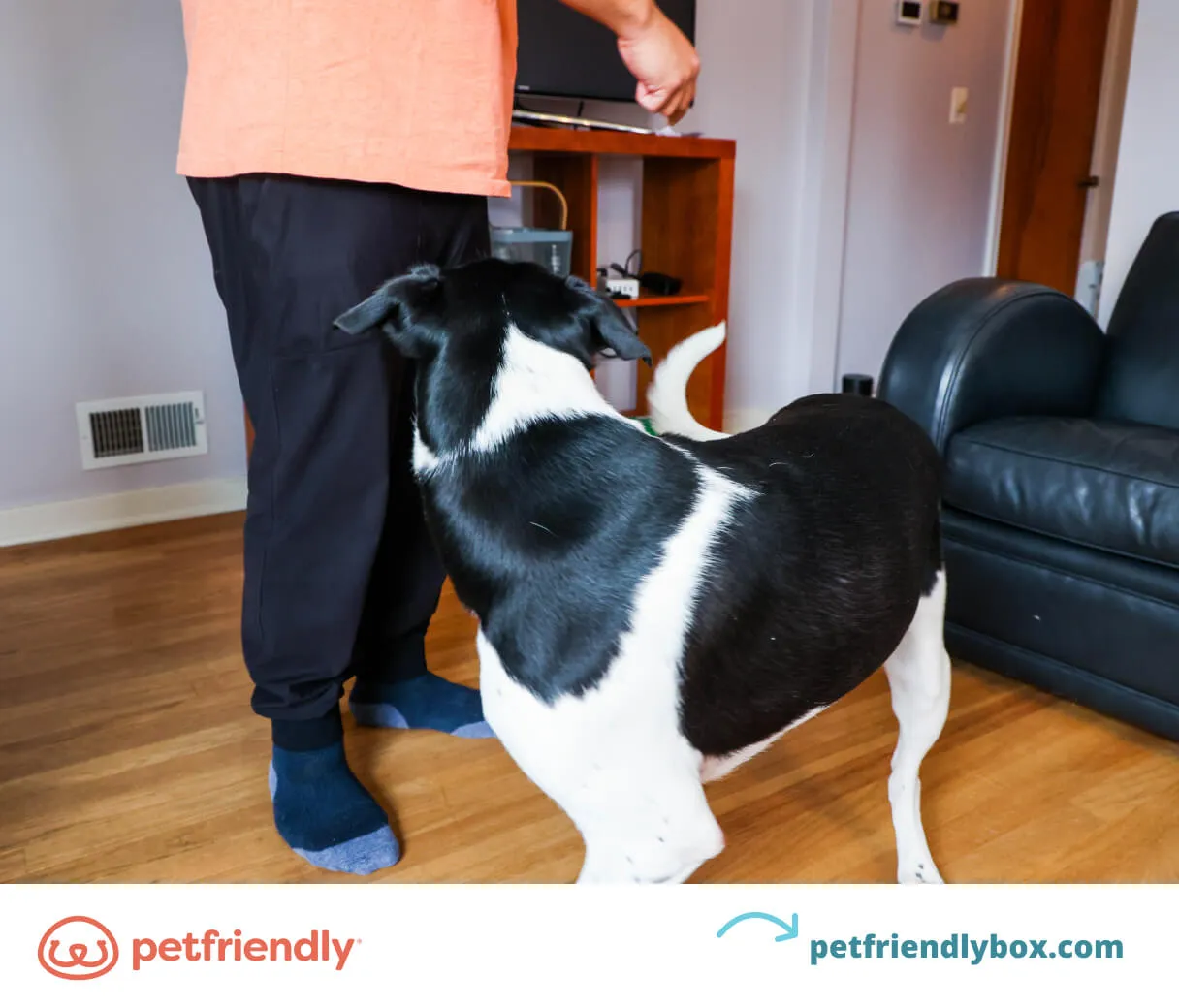Teaching your puppy new tricks is a rewarding journey that goes beyond mere entertainment; it’s a fundamental part of responsible pet ownership. These engaging activities are crucial for your puppy’s development, helping them build impulse control and remain mentally and physically stimulated. Engaging in dog training equips your canine companion with essential skills, enhances their behavior, and broadens their understanding. When a dog consistently comprehends and executes a command, their demeanor improves significantly, leading to better interactions with both other dogs and people.
 Dog Trick: Sit
Dog Trick: Sit
1. Sit: The Foundation of Training
“Sit” is arguably the easiest and most crucial trick for any pet owner to teach their dog. It serves as the cornerstone for most other dog tricks, making it an indispensable starting point. Once your pet has mastered the “sit” command, they will find learning subsequent tricks considerably easier. For an extra touch of fun, you can even progress to teaching your dog to “sit pretty,” a delightful trick to impress friends and family.
How to Teach Your Dog to Sit
To effectively train your dog to sit, employ a high-value treat as a lure. Hold the treat close to your dog’s nose while they are standing. Gradually lift the treat upwards and over their head, moving towards their rear end. This motion naturally encourages your dog to lower into a sitting position as their head follows the lure. The moment your dog sits, verbally command “sit,” immediately follow with the treat reward, and offer verbal praise like “yes!” or “good dog!” Consistent repetition of this process will help your puppy associate the verbal cue with the action.
 Dog Tricks: Stay
Dog Tricks: Stay
2. Stay: Building Patience and Control
Teaching your dog to “stay” is a fundamental trick that is incredibly useful in everyday life. This command can be used to keep your dog close by your side or to prevent them from approaching people or other animals unexpectedly. The “stay” command is vital for developing your puppy’s impulse control. As they mature, this learned behavior will become ingrained, ensuring they remain composed in various situations.
How to Teach Your Dog to Stay
Begin by having your dog in a “sit” position. Once seated, clearly say the verbal cue “stay.” Wait for a few seconds. If your dog remains seated without moving, acknowledge their good behavior with a release word and a reward. Gradually increase the duration of the pause between the command and the reward. As your dog becomes more accustomed to staying put on command, try giving the command and taking a few steps away from them. As they master this, you can progressively increase the distance, introduce distractions, or even leave the room for a greater challenge. Remember to always use a consistent release word, such as “OK” or “free,” to signal the end of the command.
 Dog Tricks: Come
Dog Tricks: Come
3. Come: A Lifesaving Command
Teaching your dog to “come” when called is a paramount trick in dog training. The anxiety of a puppy running off and being unresponsive can be immense. The “come” or “here” command is not just for convenience; it can be a lifesaver in dangerous situations, allowing you to quickly recall your dog from potential harm. Mastering this easy dog trick will significantly reduce your stress levels when your dog is off-leash, giving them the freedom to explore while ensuring they return to you promptly.
How to Teach Your Dog to Come When Called
To teach this essential command, start by creating a little distance between yourself and your puppy, standing a few yards away. Say your dog’s name followed by the command “come” or “here.” As they begin to move towards you, offer enthusiastic positive reinforcement with cheers or phrases like “good dog!” Upon their arrival, reward them with a treat, generous petting, and praise. Use your release word and wait a few moments before practicing again.
 Dog Tricks: Leave It
Dog Tricks: Leave It
4. Leave It: Safety First
The “leave it” command is designed to train your dog to ignore items on the ground that they shouldn’t interact with. This crucial training can significantly enhance your dog’s safety. For instance, if you accidentally drop a piece of food or potentially toxic medication, the “leave it” command will prevent your dog from ingesting it before you can intervene. After learning this trick, your dog should consistently look to you for permission before consuming anything from the ground.
How to Teach Your Dog to Leave It
To teach “leave it,” place a high-value treat in your closed fist and present it to your dog. Gently place your closed hand on the ground in front of them and say the verbal cue “leave it.” Allow your dog to investigate your hand until they cease their attempts to get the treat. When they stop, offer praise and use your release word. Following the release word, allow them to have the treat. Repeat this process until your dog consistently refrains from trying to access the treat for several seconds. Progress to placing the treat in your open palm and repeating the command. Once they are proficient with an open palm, try dropping a treat on the floor and giving the “leave it” cue. Wait a few moments before using the release word to signal they can have it. Throughout this process, consistent praise and positive reinforcement are key.
 Dog Tricks: Down
Dog Tricks: Down
5. Down: A Relaxing Command
The “down” command is highly practical for everyday situations. It’s particularly useful when you need your dog to remain still, such as during vet visits or when guests are present in your home. This essential trick helps your puppy maintain composure and relax.
How to Teach Your Dog to Down
Start with your dog in a standing position. Instruct them to “sit.” Once sitting, hold a dog treat between your fingers so your pet can clearly see it. Slowly move your hand downwards to the floor in a straight line. Your dog’s nose should follow the treat. When your hand reaches the floor, slowly drag it towards you, away from your pet. Your dog will naturally lie down to reach the treat. As soon as they are in a lying position, say the command “down” and reward them with the treat. Follow with praise, pats, and your release word. Repeat until your dog lies down reliably with the verbal command alone.
 Dog Tricks: Place
Dog Tricks: Place
6. Place: Encouraging Calmness
The “place” command is an invaluable trick for teaching your dog to settle down and relax. Training your dog to go to their designated “place” can be incredibly beneficial when you need them to be out of the way, such as during meal preparation or when guests arrive. This command can effectively address problem behaviors like begging at the dinner table or jumping on visitors. By teaching your dog to go to their place as an alternative, you can preemptively deter undesirable actions.
How to Teach Your Dog to Place
Before introducing “place,” ensure your dog has mastered “sit,” “down,” and “stay.” You will also need a clear release word. Introduce your dog to their designated “place” (e.g., a bed, mat, or crate). Reward any attention they give it, such as sniffing or stepping onto it. You can also use a treat to lure them onto their place. The moment your dog steps onto their designated spot, say the verbal command and reward them. After a short duration, use your release word to indicate they are free to leave. Gradually increase the time they spend on their place before rewarding. As they improve, you can add distractions like shaking a leash, opening a door, or making noise while they remain on their place, rewarding them for staying put.
 Dog Tricks: Back Up
Dog Tricks: Back Up
7. Back Up: Navigating with Finesse
“Back up” is a movement-based trick that helps dogs learn to use their bodies safely and efficiently. Walking backward is not intuitive for most dogs, making it a skill they need to learn. Tricks like “back up” can be quite useful when navigating tight spaces or encouraging your dog to give guests a bit more personal room.
How to Teach Your Dog to Back Up
Choose an open space for training, such as a hallway or an outdoor area. With your dog standing in front of you, take a step towards them. When your dog takes a step backward with their hind legs, reward them with a treat. After a few repetitions, introduce the command “back” or “back up.” With consistent practice, your dog should begin to walk backward automatically upon hearing the verbal cue.
 Paw Shake Hands Dog Trick
Paw Shake Hands Dog Trick
8. Shake Paws: A Friendly Gesture
Teaching your dog to “shake paws” is an easy and charming trick that’s perfect for social interactions. It’s a wonderful trick to showcase to friends and family.
How to Teach Your Dog to Shake Hands (Paws)
Have your dog start in a sitting position. Hold a small treat in your closed hand, just out of their reach, in front of them. Repeat the phrase “shake” while gently tapping one of your dog’s front paws with your other hand. Many dogs will instinctively lift their other paw in an attempt to reach the treat. As your dog lifts their paw, gently take it in your hand, say your command word, and reward them with the treat. This helps them associate the command with the action. Repeat these steps until your dog automatically lifts their paw when you give the command.
 Dog Trick: Play Dead
Dog Trick: Play Dead
9. Play Dead: A Dramatic Performance
While not as critical as commands like “sit” or “stay,” “play dead” is a fun trick that adds a flair to your pet’s repertoire. If your dog already knows the “down” command, they should grasp this trick relatively quickly.
How to Teach Your Dog to Play Dead
Begin with your dog in a lying position. Use the “down” command to get them to lie down. Hold a high-value treat close to your dog’s nose and slowly move it sideways. This should encourage your dog to roll onto their side to follow the treat. Reward them with the treat when they are lying on their side. Repeat this until they are comfortable in this position. Next, introduce a verbal command, such as “play dead” or “bang,” or a hand signal (like a finger gun). Once your dog associates the command with the behavior, reward them with a treat.
 Dog Trick: Speak
Dog Trick: Speak
10. Speak: Communicating on Command
Barking is a natural way for dogs to express themselves, but sometimes owners need to manage excessive barking. Teaching your dog when it’s appropriate to “speak” can aid in impulse control and reduce nuisance barking.
How to Teach Your Dog to Speak
Position your dog in front of you and make it clear you have something enticing, like a favorite toy or treat. Observe your dog’s reaction. They might vocalize out of excitement or frustration. The moment your dog makes a sound, mark the behavior with the command “speak” and immediately reward them. Repeat this process until your dog reliably “speaks” on command.
 Take a Bow Dog Trick
Take a Bow Dog Trick
11. Take a Bow: A Natural Stretch
The “bow” command often comes naturally to some pets, especially those who frequently stretch. Instead of simply acknowledging their stretch, use the command “bow” or “take a bow” to reinforce this trick.
How to Teach Your Dog to Take a Bow
With your dog standing, hold a treat in front of their nose. Slowly move the treat down towards the floor. Their nose should follow the treat all the way to the ground. As you lower the treat, say the command “bow” or “take a bow.” When your dog’s front legs are lowered while their hindquarters remain standing, reward them with the treat. Repeat this until your dog performs this trick on command.
 Dog Trick: Spin
Dog Trick: Spin
12. Spin: Adding a Fun Flourish
“Spin” is a delightful trick to add to your dog’s repertoire. While not essential, it’s an entertaining trick that’s enjoyable to teach your puppy.
How to Teach Your Dog to Spin
Hold a treat close to your dog’s nose and slowly move it towards the side of their head, encouraging them to turn their head to follow. While moving the treat, say the command “spin.” Continue moving the treat in a full circle until your dog spins completely around. Once you’ve returned to your starting position, reward your dog with the treat. Repeat these steps until your dog completes a full circle with just the verbal command.
 Final Tips to Learn Tricks
Final Tips to Learn Tricks
Final Tips for Teaching Your Dog Tricks
As you embark on teaching your puppy these simple tricks, keep a few essential tips in mind to ensure success:
- Keep training sessions short and engaging: Aim for 10-15 minute sessions, once or twice a day.
- Start with basics: Master foundational commands before moving to more complex tricks.
- Use high-value rewards: Employ treats your dog particularly loves. Consider using pieces of their regular food or supplements to avoid overfeeding, and schedule training around meal times.
- Be patient and consistent: Not all dogs learn at the same pace. Celebrate small victories and maintain a consistent training routine.
Behavior and trick training offer a fantastic way to stimulate your pet’s mind and strengthen your bond. Remember, with patience, consistency, and plenty of positive reinforcement, you and your puppy can master these awesome tricks to teach your dog and enjoy a happier, more connected life together.
